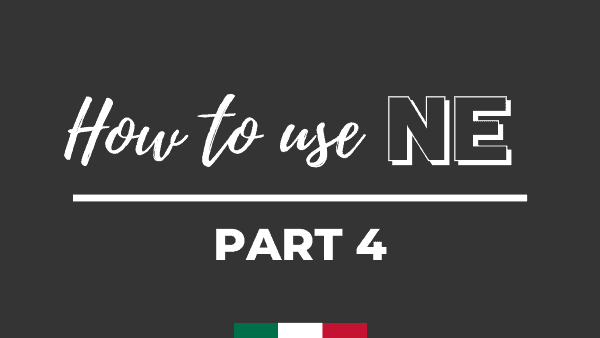How to choose between PRESENTE, FUTURO, PASSATO PROSSIMO and IMPERFETTO
Phil asks: ” How do I know which italian tense to use?“
The Present Tense: IL PRESENTE
The Italian Present Tense is used to render the following scenarios:
- Generic statement: I speak
- Continuous action in the present: I am speaking
- Future action: I will speak
- Intentional action: I am going to speak
In all these cases we would simply say:
IO PARLO
▷ SOME EXAMPLES
PARLO ITALIANO
I speak Italian / I am speaking Italian / I will speak Italian / I am going to speak Italian
DOMANI PARLO ITALIANO CON TE
Tomorrow I will speak Italian with you / Tomorrow I am going to speak Italian with you
CHE FAI? PARLO ITALIANO!
What are you doing? I am speaking Italian!
Download the PDF
No email required
The Future Tense: IL FUTURO
The Italian Future Tense is rarely used to speak about the future. We use the Present Tense for that, right?
The Italian Future Tense is mainly used for suppositions. When we are guessing something. In English we use the verb MUST to accomplish the same.
▷ SOME EXAMPLES
CHE ORE SONO?
NON LO SO. SARANNO LE 7.
What's the time?
I don't know. It must be 7.
Literally we are saying “they will be” (SARANNO in the future of ESSERE)
SAI QUANTO COSTA?
COSTERÀ 20 EURO?
Do you know how much that costs?
It must cost 20 euro?
Literally: “il will cost”.
The Italian Future Tense is used for things in the future, but when there is DOUBT about their coming to fruition. Basically, we use the future when we are not sure about that thing actually happening.
▷ SOME EXAMPLES
UN GIORNO VINCERÒ LA LOTTERIA
One day I'll win the lottery
SONO SICURO CHE AVRAI FIGLI
I am sure you will have kids
These are different from us saying that:
– “in 2 years we'll go to Japan”
– FRA DUE ANNI ANDIAMO IN GIAPPONE
with the Present Tense
Because in this latter case, when we say that we're going to Japan, we believe that it will happen. We are certain about it. Sure, it might not happen, but our intention in saying it is that it WILL definitely happen.
Learn Italian to Fluency
- The program you've been dreaming of is here
- Better than having a private tutor
- In-Depth Italian lessons for complete clarity
- Extensive pratice opportunities
- Access to our community - you are never alone!
- A true learning experience to Italian Fluency
The Perfect Past Tense: IL PASSATO PROSSIMO
The Italian Passato Prossimo is used to express anything that HAPPENED (took place) in the past (regardless of its proximity to now). An action that has a beginning and an end.
▷ SOME EXAMPLES
IERI HO VISTO UN BEL FILM
Yesterday I watched a good movie
10 ANNI FA SONO ANDATO A NEW YORK
10 years ago I went to New York
STAMATTINA HO GIÀ PRESO 3 CAFFÈ
This morning I have already had 3 coffees
The Imperfect Past Tense: L'IMPERFETTO
The Italian Imperfetto is another past tense that is used to:
- describe things / events in the past (nothing happened)
- habits in the past
- Continuous actions in the past
As the name suggests, this tense is “imperfect” in the sense that it doesn't really tell us a full story.
▷ SOME EXAMPLES
LA MIA PRIMA MACCHINA ERA ROSSA
My first car was red
QUANDO ERO GIOVANE GIOCAVO A TENNIS
When I was young I used to play tennis
IERI MENTRE NUOTAVA, LUCA HA VISTO UN DELFINO
Yesterday, while he was swimming, Luca saw a dolphin
Here the fact that my car was red, is just a description. My car didn't do anything.
The fact that I played tennis while I was young implies that I played it the whole time I was young, which is a pretty long time! It's a habit.
Finally, the fact that Luca was swimming, is a continuous action in the past, which sets the scene for what actually happened (he saw a dolphin). We couldn't stop our sentence at “Yesterday while Luca was swimming.” That would be … imperfect!
Download the PDF
No email required



